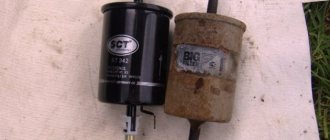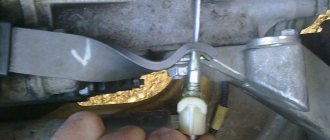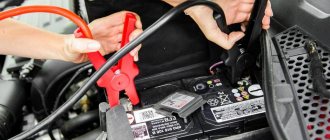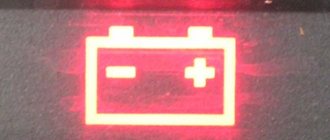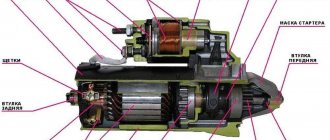The battery is an important component of any modern car. With its help, the engine starts, plus you can turn on different consumers without starting the engine. Thus, the power comes not from the generator, but from the battery.
But over time, the battery capacity may decrease. And at some point, when you turn the key in the ignition, nothing happens. Yes, car service specialists will say that the battery has reached its end, its service life has expired, and it is better to buy a new one. And they will probably tell you where and which one to buy.
But you shouldn't make hasty conclusions. A procedure such as CTC often allows you to resuscitate the battery. This is not a 100% guarantee of returning to full functionality, but a great way to save on buying a new battery. It's at least worth a try.
Why does the charge drop?
All batteries have a certain capacity, stated in Ah. In passenger cars, batteries of 60-80 Ah are most often found. That is, at 60 Ah, the device can produce a current of 1 Ampere for 60 hours. But this is in theory.
In practice, everything is different. As soon as the engine starts, the charge drops significantly. But it is compensated by the operation of the generator. Not all drivers drive a lot and often, and therefore the generator simply does not have time to replenish the entire charge. It has been proven that in most cases, cars are operated with constant undercharging.
Capacity can decrease under the influence of various factors:
- poor fastening, mechanical damage;
- electrical problems;
- violation of the integrity of electrical wiring;
- sulfation processes;
- driving around the city on short trips;
- low ambient temperature, etc.
Since most drivers drive in such conditions, it is imperative to periodically check the condition and charge of the battery.
What most often shortens the life of a car battery?
- Electrolyte evaporation. When operating a car, especially in the summer, when it is especially hot under the hood, water evaporates from the electrolyte. As a result, the electrolyte level drops and the battery plates are exposed. This very quickly leads to their sulfation;
- The battery is not always charged. This situation is observed when trips are short and there are a large number of current consumers in the car;
- Low electrolyte density. If the density of the electrolyte is low, it can simply freeze in cold weather. This threatens that the plates in the jars will be warped. In this case, the battery is immediately sent to a landfill;
- Faulty electrical wiring in the car. Problems in the vehicle's on-board network significantly reduce the life of the vehicle's battery;
- Inaccurate operation. Using a loose or poorly secured battery may result in impacts, overturning, etc. As a result, the case and terminals may be damaged, and a short circuit may occur.
Concept of CTC
Now we should understand in more detail the control and training cycle for batteries, since not everyone understands what it is and why it is carried out.
The batteries used in cars are lead-acid. They differ from each other in design features, additives used, and consistency of the electrolyte used. Therefore, there are AGM batteries, gel batteries, calcium batteries, etc.
The battery life is usually indicated by the manufacturer on the device body. However, you can often see figures within 5-10 years. This period seems quite acceptable, since the prospect of changing batteries every 7-8 years is encouraging. But the stated deadlines rarely coincide with the real ones. This is due to difficult working conditions, driving with constant undercharging. This affects cars used in the city and traveling short distances. Add to this low temperatures and neglect.
To minimize the cost of purchasing a new battery, you should do everything possible to extend the life of your existing battery. For this purpose, such a procedure as the CTC is provided.
A control-training cycle is a procedure that is carried out to restore discharged and old batteries. Its meaning is to completely discharge and then charge the device.
CTC allows you to partially restore characteristics and improve battery performance. You should not count on the same 100% efficiency as it was when you purchased it. But the battery will definitely serve you for an additional 2-3 years.
The recommended frequency of CTC is 2 times a year.
Let's start the control and training cycle of the battery
1. Clean the battery from dirt, dust and oxides on the terminals.
2. Connect the battery to the charger, strictly observing the polarity.
3. Open the caps of each battery and add distilled water to the required level.
4. After a few hours, we will see that charging is in progress - a reaction is taking place in each jar with the release of hydrogen, and the battery itself is slightly heated.
Important! If there is no reaction in one of the cans, turn everything off and go to the store for a new battery!
5. If everything is fine, we continue the process. When the battery reaches its maximum charge, and it may not reach the standard values, we begin discharging!!!
6. Discharging the battery is easy: connect any light bulb directly to the battery and wait until it stops burning completely.
7. Now add distilled water to the jars and connect the battery to the charger AGAIN. Charge current - no more than 0.5 A.
8. And so we perform several of the above cycles.
9. Are you lucky: the battery is alive? We check the electrolyte level, its density, and the voltage at the terminals. If everything is normal, let the device cool and take it into the car. Everything worked out!
In principle, keeping the battery in working condition before the onset of cold weather is not difficult. To do this you need to follow a few simple rules.
1. Do not leave energy consumers turned on when leaving the car. True, in modern cars almost everything is turned off by turning the key in the ignition, but our motorists also have cars that are not particularly new.
2. If your commute is short, the generator will not make up for lost energy. The solution is to force the battery to recharge. This could be long-distance driving or using a charger.
3. Fans of electric tuning are in the battery risk group. By installing speakers, a subwoofer, etc., you run the risk of not starting the car even in summer.
4. We regularly check the voltage at the generator output. It is because of this deficiency that the battery may be undercharged.
5. Check the tension of the generator belt. If necessary, adjust its position.
And one last thing. We keep the battery clean: it is dirt that causes self-discharge. Its magnitude is insignificant, but you may encounter this problem upon returning, for example, from vacation.
To prevent the battery, the driver must buy only two things:
- the simplest voltmeter (cost - from 300 rubles);
- load fork (cost from 700 rubles).
Related link: Car battery charger - which one is better to choose
Why do you need training?
Not everyone fully understands why such training is carried out on an old or dead car battery.
There are several main reasons:
- desire to postpone the purchase of a new expensive battery;
- increasing the service life of the used battery;
- resuscitation of a battery that was forgotten and found after a long time;
- restoring the characteristics of a battery that has been in use for a long time.
In some cases, when the battery has been lying in the garage for a couple of years or they simply forgot to remove it from the car, leaving it for long-term storage without the terminals removed, it is possible to restore the battery, which seems already condemned to disposal.
Correctly carried out training of an old car battery, when charging and discharging, allows the car owner to save money. Plus, the battery will somewhat restore its characteristics, and therefore the engine will start easier even in severe frosts.
In what cases does a new battery need to be charged?
Our car owners sometimes have no idea that new car batteries sometimes need to be recharged. Of course, this is usually due to incompetent sellers who assure buyers that the devices they sell are initially ready for full use. During manufacturing, devices are charged at factories, but before the battery reaches the buyer, it can sit for months in a store or warehouse. During this time, the devices self-discharge, as a result of which they lose some of their capacity and, of course, they will need to be charged.
The longer battery devices sit idle, the faster they discharge. When purchasing a battery for a car, you need to check the markings and production date - if more than six months have passed since the date of manufacture, the device must be charged before use. And in principle, experts do not recommend buying batteries manufactured more than six months ago. And although the shelf life of most batteries is 12 months, the actual use of the device begins from the moment the electrolyte is poured into it. And this, in turn, happens in production.
Device density correspondence table
To roughly estimate how much charge your car battery has, you will need a tester - a voltmeter or multimeter. For diagnostics, attach the black probe of the tester to the “-” terminal, and the red one to the “+” terminal. If the seller assures that the device you are purchasing is fully charged, then the voltage parameter should be from 12.6 to 12.9 volts. If the obtained values are lower, then it is necessary to recharge before use. If the car battery voltage is about 11 volts, then the device needs to be fully charged.
What to look for when buying a new battery?
What you need to consider when buying a new battery:
- We have already talked about charging - when buying a device, you need to check its charge.
- The same goes for the date. If you notice that more than six months have passed since the battery was produced, then it is better not to buy it.
- When purchasing, it is a good idea to measure the level and density of the liquid - for this you will need a hydrometer.
- Also check out the main indicators - its capacity, inrush current, class.
- Dimensions of the device, as well as its terminal location. There is a misconception among our compatriots that all batteries are the same in design features; this is not true. The dimensions of the devices may vary depending on the purpose and possibility of use in certain car models. When purchasing, you need to be especially careful to make sure that the terminals of the device you are purchasing are located in the same way as in your battery, and not vice versa. If the location of the terminals is different, this will cause difficulties during connection and operation.
- Also, before purchasing, you should remove the protective film and make sure that there are no cracks or other types of damage on the case. If you notice any defects, we recommend that you refuse to purchase the device (the author of the video is Sergey Rotanov (RSV)).
Sequence of the CTC procedure
Many people carry out CTC of old batteries at home and successfully complete the tasks.
To perform this procedure, you will need to prepare:
- Charger;
- hydrometer;
- load of the required size;
- multimeter
Self-charging your own car battery using the CTC method quite often gives a positive result. But for this it is important to strictly follow the instructions and adhere to the given sequence.
To complete the training cycle, that is, charge and discharge worn-out batteries, you should learn how to use a multimeter.
The procedure itself includes 3 stages:
- pre-charge;
- control digit;
- charge.
It is important to perform each stage correctly. If during normal maintenance you only need to discharge the battery, then with CTC of the battery you need to know to what voltage to do this and when to start the reverse action.
Preliminary calculations are carried out for a specific battery to determine the exact load.
Preliminary stage
If you delve into the essence and study all the details, then the scheme for carrying out the CTC of a car battery will not seem so complicated. Therefore, many successfully do it with their own hands.
If you have a good quality factory charger, no problems will arise. Just connect the battery to the charger and wait for the process to complete.
The voltage up to which CTC will need to be carried out depends on the specific battery and the conditions of the cycle. Therefore, study its technical characteristics.
The charge is carried out according to the density of the electrolyte located inside and according to the voltage. When precharging the battery, focus on the following values:
- A voltage of 12.72 V corresponds to a density of 1.28 and indicates a 100% charge.
- A voltage of 12.5 V says the density is 1.24 and the charge is 75%.
- At 12.35 V the density will be 1.2. In this case, the battery is charged 50%.
- If 12.1 V, then the density is low, only 1.16, and the charge is only 25%.
These parameters, as well as the use of special formulas, will be relevant when using a simplified version of the charger. It is important to calculate the exact time.
For example, measuring density with an aerometer showed 1.16 g/cm3. That is, the charge here is 25%, and its loss is correspondingly 75%. The battery itself has a capacity of 60 Ah.
To calculate the loss, the capacity should be 60 Ah multiplied by 75% and divided by 100%. We get 45 Ah.
The charging current voltage should always be no more than 10% of the battery capacity.
If you have 60 Ah, then the charging current will be 6 A.
As a result, it is easy to calculate the time required for charging. There is a formula for this: 2 multiplied by the loss of capacity and divided by the charging current.
In this case it is 2*45/6. Total 15 hours to charge.
But the calculation is approximate, since you still need to constantly monitor the density and voltage parameters. Once they reach 1.27 g/cm3 and 12.7 V respectively, the charge is complete.
We have already figured out how to pre-charge the battery.
Discharge
Read more about how to correctly and independently carry out CTC for your battery. We need to move on to the second stage. Now let's properly discharge the battery.
Oddly enough, to restore the battery's functionality after charging it, you need to completely recharge it. Only the discharge process must be strictly controlled.
When discharging a battery, be it an AGM type, the popular gel, calcium or classic lead-acid, it is necessary to create an electrical circuit in which a current consumer, a voltmeter and an ammeter will be connected.
The battery is discharged using a 10-hour current. Its value ranges from 9 to 10 of the battery capacity.
Here you should look at the instruction manual or use special tables. Here are some examples:
- for a battery with 6 banks of 50 Ah, the discharge current will be 4.5 A;
- with 6 banks, but 60 Ah, this is 5.4 A;
- if there are 12 cans and the capacity is 70, then 7 A is used;
- at 90 Ah, a discharge current of 8.1 A is required.
The discharge is carried out by an appropriate and correctly selected load. For standard car batteries with a capacity of 60 Ah, it is enough to take a 65 W bulb. The load can be calculated using the formula by multiplying the discharge current by the voltage of 12 V.
Having all the necessary tools for the battery CTC, you can begin discharging. At the same time, it is important to ensure the following conditions:
- the electrolyte temperature at the start of the discharge is in the range from 18 to 27 degrees;
- temperature and voltage checks are carried out before starting the process and then repeated at intervals of 2 hours;
- when the voltage drops to 1.85 V, the check is done every 15 minutes;
- when the voltage drops to 1.75 V, the parameters are constantly monitored;
- at a value of 1.7 V, the discharge stops and the load is turned off.
Never leave the battery discharged. You need to start recharging immediately.
Otherwise, it is unlikely that it will be possible to revive the battery.
using UTAB 12-60/20 and UZPS 48-20
Methods for charging a battery without using a charger
The importance of conducting a battery control and training cycle (CTC) is well known. In general, the CTC of a battery consists of carrying out the “CHARGE-DISCHARGE-CHARGE” cycle
In general, the CTC of a battery consists of carrying out the “CHARGE-DISCHARGE-CHARGE”
and takes quite a long time.
To facilitate the CTC process (reduce labor costs), we offer a set of equipment for an automated battery testing complex, using the UZPS 48-20 charging and feeding device and the UTAB 12-60/20 battery testing device.
The listed devices have the ability to work together with each other; their joint operation is ensured using a signal cable.
Let's consider the operation of the complex using the example of a TPL 121500 battery (12V, 150Ah).
The composition of the complex and the connection of devices to the battery are shown in the figure. We don't need a hydrometer because... The battery is sealed.
How to determine the discharge parameters for CTC?
Using the table (from the technical description for the TPL 121500 battery), we determine the value of the discharge current for a 10-hour cycle.
The table offers a range of discharge current values at various final voltages. However, in order not to go to extremes, we will choose average values.
Discharge current
battery TPL 121500, with a 10-hour cycle, up to a final voltage of 1.80 V/El should be equal to 15.0 Amperes
.
Let us determine the final discharge voltage
for 12 Volt batteries: 1.80 V/El × 6 El = 10.8 Volts
.
- P1 - charge current - 20 A;
- P2 - constant charge voltage - 13.6 V;
- P3 – charge cut-off voltage – 14.2 V;
- P4 - 12.6 V;
- P5 – 000 min.
The procedure for turning on the complex
- Connect UZPS 48-20 and UTAB 12-60/20 to the battery.
- Connect UTAB 12-60/20 to UZPS 48-20 using a signal cable.
- Turn on the power to UTAB 12-60/20 and UZPS 48-20.
- Enter the operating parameters of UZPS 48-20 ( P1=20, P2=13.6, P3=14.2, P4=12.6, P5=000
) and turn on the circuit breaker. - Enter the operating parameters of the UTAB - discharge current 15.0 Amperes
, final voltage
10.8 Volts
. - After the message “To start charging, press ENTER”
, press the
“ENTER”
and the complex will begin work on carrying out the CTC.
UTAB is the leader in the operation of the complex; it manages its operation in the following order:
- The battery is automatically charged.
- Twenty minutes after the end of the charge cycle, the charger automatically turns off ( "OFF"
), and UTAB 12-60/20 begins the discharge cycle. - When the final battery discharge voltage is reached, UTAB 12-60/20 automatically stops the discharge cycle, and the charger turns on and goes into battery charging mode.
- After the end of the charge cycle, the UZPS 48-20 switches to the battery maintenance (recharging) mode.
At the end of the CTC, we have a charged battery and test results, which are displayed on the UTAB screen.
Click on photo to enlarge
We spent 20 minutes preparing the complex for work, and the complex worked automatically for about 17 hours:
- Battery charge before discharge – approximately 2 hours (battery already had residual capacity)
- The battery drain lasted 7 hours and 39 minutes;
- Battery recovery charge is approximately 7 hours.
From the expected capacity of 150 Ah, it was possible to remove 114.7 Ah. Taking into account the adjustment for ambient temperature and the fact that the battery was “orphaned” for two years, its condition can be assessed as “satisfactory”.
Determining the cause of the discharge
We need to determine where the charge goes: whether it is being “eaten off” by background processes and services, or whether the discharge is caused by a decrease in battery capacity due to wear and tear. This is quite easy to do through the built-in battery usage statistics function. Starting with iOS 7.0, we have not only meager usage and expectation figures (although there are plenty of them), but even detailed statistics on applications.
The bottom line is that the iPhone and iPad should not be discharged in standby mode, which means the standby time from the statistics menu should be significantly longer than the use time (even though the device is at rest).
If your waiting time is equal to or almost equal to the usage time, then there is background activity of applications or services, which is the cause of the discharge. It's worth checking out the apps on the list and their access to content updates, geolocation, and more. Here are some more useful tips for you.
If everything is in order, and the battery still lasts very little even with gentle use, move on to the next point.
What is a control training cycle?
If the battery is very tired or has not been used for a long time, only the KTC - control-training cycle can help it. It will also help you get to know the battery that was in, say, a newly purchased car, and determine its approximate lifespan. The entire operation is easily carried out with your own hands without complex equipment and encyclopedic knowledge. It is enough to read this manual, and the battery can live a new life, breathe deeply and delight the owner with a stable 12V. Experienced motorists recommend training and restoring the car battery at least once a year, with the exception of new batteries. The training cycle includes a full charge of the battery, a control discharge of the battery, and then recharging.
Battery charging time at constant current
The formula for calculating the charging current is: I=Q*k, where Q is the battery capacity, and k is a certain coefficient of the nominal value (its ideal value is in the range of 0.04...0.06, and the optimal value is up to 0.1). Based on this recommendation, the calculation of the time needed for a fully charged battery looks like this: T = Q/ I. Substituting your values, you will see that it turns out to be quite a lot of time, but since often not a full charge is required, but only restoration of the lost capacity, then this figure will be two or one and a half times less.
To roughly estimate the required time to charge a car battery with direct current, you first need to determine the degree of discharge of the battery (in percent), then determine the lost capacity (in Ah), and then, choosing the value of the charging current, calculate the time for full charging. The formula for calculating how long to recharge a car battery looks like this:
Multiplying this ratio by 2 times is necessary due to the fact that the efficiency of the process is 40-50%, the rest is spent on heating, as well as related electrochemical processes.
The use of the calculation formula must be accompanied by monitoring the progress of the charging process, especially at its completion, so as not to miss the beginning of violent boiling.
When the voltage stops increasing at the battery terminals for an hour while charging, the battery is 100% charged.
The value of the final voltage depends on: the magnitude of the charging current, temperature, internal resistance of the battery, the presence of impurities in the electrolyte and the composition of the alloy of the grids.
